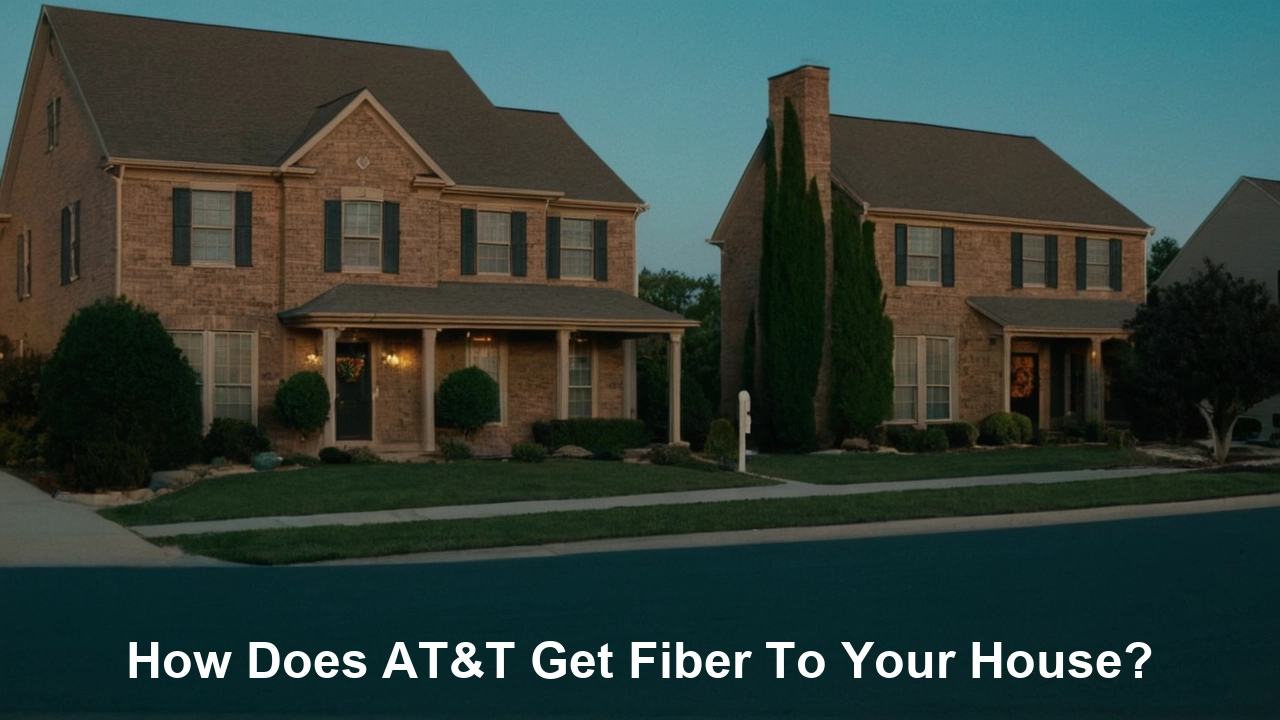How does AT&T get fiber to your house?

Fiber internet is a network that can take quite some time to install in your home, especially if the provider has to do a lot of construction work. Here is an overview of how AT&T gets fiber to your house: Here is an overview of how AT&T gets fiber to your house:
The Planning Process
AT&T designs where it will lay fiber through a planning process that precedes any construction that may occur. Engineers look at issues such as population size, land, other structures already in place, costs of construction, and possible profits. They employ such details when determining which neighborhoods and areas would get fiber.
After target areas are identified AT&T Internet prepares detailed construction drawings. They indicate positions and alignments of the cable fiber routes, the points of access, connection positions, and equipment such as terminals, and splitters, among others. Fiber length measurements at the right depth and determination of the right routes for the fibers to take are vital in cutting down the costs of construction.
Underground or Aerial Fiber
As for how AT&T brings fiber cable to houses, there are primarily two methods – direct burying or drooping fibers over utility poles. Cabling the cable underground is costly but ensure the cables are well protected from incidents such as vandalism, flooded areas, or even experiencing natural calamities like lightning strikes, a falling tree or branches may pose a great danger to the overhead cables. As it is seen, depending on infrastructure, geography, and the construction regulations of an area, one of these methods is used.
One way to deploy fiber is to dig it beneath the ground; construction personnel dig up trenches along the intended path for cables and lay conduits containing multiple strands of fiber. They are protective coverings for the delicate glass fiber strands. They attempt to place conduits within the easements adjacent to the established utility structures to disturb the environment as little as possible. After conduits are installed, the trenches are properly closed.
Aerial fiber installations involve the strings of the fiber cables on the existing utility poles such as telephone and electrical lines. Depending on the suspended cable length and the type of poles, different cable and installation bracket designs are employed. Existing cables or lines that may be passing along the same route as the fiber cable may have to be relocated to allow for the way for the fiber cable to be laid.
They embrace the Main Trunk Lines and Local Connections.
The fiber cable system is a high-capacity main ‘trunk’ circuit that is linked to circuits in the local distribution circuits that directly link to customer sites. The trunk lines are made of as few as 36 or as many as 432 separate strands of fiber combined into a bundle.
While the trunk lines are laid along the streets reaching the broad target area, the tap lines are sub-branches from the main bundled lines reaching the actual neighborhood or blocks. The fiber lines run overhead via the utility poles but turn underground as they get closer to homes.
Essentially, from the distribution lines at the street level, every strand of fiber is terminated at a house that is served. Small access boxes mounted on building exteriors provide the link between the fiber line and the building through conduits to the premises.
Customer Premises Equipment
The exercise of having fiber cables to individual houses only partly addresses the challenge of connection. However, another important factor in achieving those high speeds and fiber internet capabilities is also the customer's indoor equipment.
The fiber line that enters the houses connects to the Optical Network Terminal’s (ONT) wall box unit. The ONT then demultiplexes the light signals coming in from the fiber line into electrical signals and data that other electronics can recognize. It has ethernet ports for connection by a wire or into a router for wireless connection.
AT&T offers the fiber broadband ONT router in one package in the form of a device known as the BGW320 gateway. This combined unit brings the high bandwidth that fiber offers directly to the devices within the home, thus giving the Fiber customers the most optimal experience that fiber provides.
The gateway links to computers, phones, smart TVs, game consoles, additional equipment, and more for web experiences powered by fiber. For customers to fully enjoy the benefits that AT&T fiber has to offer, they should install in-home devices, as well as WiFi networks.
Inspection and Activation
Once the construction is over, AT&T does numerous assessments and checks to ensure that all the fiber installations meet the standards set. They ensure such things as tension in aerial lines, condition of conduits and other accessories, and functionality of some of the equipment among others. AT&T also states that it has adequate network infrastructure to meet the demand of each area it offers fiber solutions.
In successful inspections, AT&T draws a line through the fiber deployment for some of its customers. The last step is then the official activation of the customers that were initially identified along with the activation of internet services. The final process configuration can then be initiated, and once this is through, customers can begin to utilize their high-speed fiber line.
And that sums it up – a basic overview of how AT&T engineers, builds, and provisions fiber to residents. This is involved in telecom development to dig up fiber lines, hang cables on poles, make terminations, and integrate utilities that provide utilities to hundreds of houses. But the outcome is ultra-high-speed internet over a future-proof fiber optic network infrastructure.
Upgrade to faster, more reliable AT&T Fiber Internet today! Call us at +1 844-905-5002 and get connected with speeds that keep you ahead.





